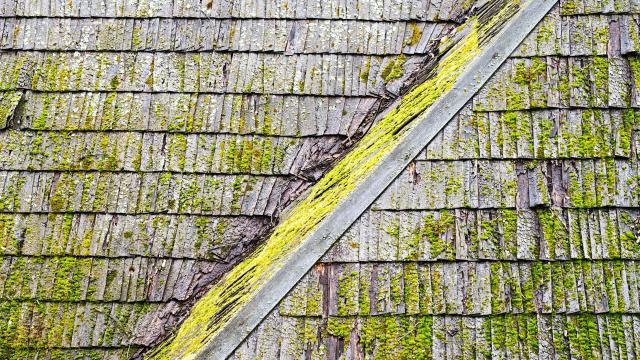With the exception of a few pungent cheeses, mould isn’t something you want anywhere in or on your home. It tends to be the sign of a larger structural or ventilation problem, and not only is it often accompanied by that damp, musty smell, it’s also not great for our health.
While as it may not be as urgent of a problem of finding it indoors, discovering mould growing on your roof can be unsettling — especially if someone in your household has allergies or other respiratory issues, or you’re getting ready to put your home on the market, and want it looking its best.
Here’s what to know about roof mould, including what it is, how to get rid of it, and how to prevent it from coming back.
Is mould growing on my roof?
First things first: What appears to be mould covering your roof is probably something else. Because we’re used to being on the lookout for it growing inside our homes, we may assume that anything green or black on our roof is mould as well, but often, that’s not the case.
In fact, when it comes to our roof, what we may refer to as “mould” is usually algae or moss. Here’s how to tell them apart:
- Algae: May look and feel slimy, but is otherwise flat; typically appears in green, black, or blue-green streaks; often mistaken for mould.
- Mosses: Tiny green plants that grow in dense, textured mats; can get thicker and more sponge-like over time.
- Mould: Relatively rare on roofs, but when it does appear, it’s likely the result of algae left on the roof too long, which makes the shingles perpetually damp, and a good home for mould.
- Mildew: A type of mould that’s typically black, red, or pink in colour with a powdery appearance; grows in wet, shady areas, but is rare to find on roofs.
So, to recap: The “mould” on your roof is probably algae, unless it looks and feels like a fuzzy green carpet, in which case, it’s moss.
Before you start the removal process
Doing any kind of work involving your roof can potentially be dangerous, so please know your limits and be realistic about your abilities — and sense of balance — and call in a professional, if necessary. If you are going to attempt the work yourself, take all appropriate safety precautions, including wearing proper PPE, like gloves, eye protection, and a face mask.
Also, in order to get rid of whatever’s growing on your roof, you’re going to be using a solution with bleach, which can also damage the plants, grass, and trees that you want to be there. One way around this is to cover the ground along the perimeter of your house with plastic tarps to protect them from the runoff from the roof.
If the tarps aren’t an option, water all the plants and grasses growing along the foundation of the house before getting started with the removal, and then again after you’re done, as a way to rinse them off.
How to remove mould and algae from your roof
Because moss-removal involves extra steps, and the stuff growing on your roof is likely algae, we’re going to focus on removing algae and mould.
There are ready-made products you can buy to get rid of mould and algae, but you can make one yourself that’s just as effective and much cheaper. Simply mix up a solution that’s half bleach and half water, and pour it into a pump sprayer.
Use the sprayer to thoroughly coat the roof with the bleach-water solution, then let it sit for roughly 30 minutes. Next, starting with the shingles at the top of the roof, use the low-pressure setting on your garden hose to rinse off the bleach.
Never use a power washer during any part of this process, as it could damage your roof.
How to prevent mould and algae from growing on your roof
Here are a few strategies you can try to help stop the mould and algae from coming back:
- Copper or zinc: Install 6-inch-wide strips of copper or zinc under the row of shingles closest to the peak of the roof, leaving 1-2″ of the lower edge exposed.
- Trim branches covering the roof: More direct sunlight means less dampness on the roof, and a less hospitable environment for algae and mould.
- Keep the roof clear: Regularly remove any leaves, branches, or other debris that accumulate on the roof, as they retain moisture.
- Clean your gutters: Make sure water has a way of draining off the roof.

Leave a Reply
You must be logged in to post a comment.